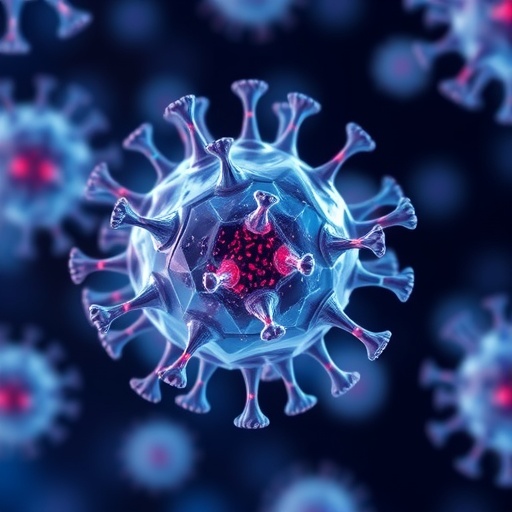
Credit: Pediatric Academic Societies
BALTIMORE – Despite the increasing trends in uptake, the human papillomavirus (HPV) vaccine coverage is far behind other infant vaccines in many states, according to a new study, which describes the trends in HPV vaccine uptake in children in the U.S. Findings from the study will be presented during the Pediatric Academic Societies (PAS) 2019 Meeting, taking place on April 24 – May 1 in Baltimore.
“In this cohort study containing more than 7.5 million children in the U.S., the HPV vaccine coverage among girls and boys by age 15 increased from 38% and 5% in 2011 to 54% and 45% in 2016,” said Szu-Ta Chen, MD, one of the authors of the study. “Despite the increase in uptake, the HPV vaccine coverage varied substantially between states and remained behind the Healthy People 2020 goal of 80%.”
Researchers identified a cohort of children within the Truven MarketScan healthcare database between January 2003 and December 2016. Children were followed from the year they turned 9 until the first dose of HPV vaccination, death, end of insurance coverage, or the end of the year when they turned 17, whichever came first. The first dose of HPV vaccination was ascertained by current procedure terminology (CPT) codes. The monthly vaccination rate was calculated as the number of children that received the HPV vaccination in that month divided by the sum of person-months contributed by the eligible children that month. The cumulative incidence of HPV vaccination was estimated based on the monthly rate of vaccination using survival analysis. The study population was stratified by birth year and gender. The cumulative incidence of HPV vaccination at age 15 was mapped across 50 States.
The study included 7,500,397 children (49% females) and 18.8 million person-years. In 2011, the proportion of 15-year-old children that had been vaccinated with at least one dose of HPV was 37.8% for girls and 4.8% for boys (1996-birth cohort); by 2016 this proportion had increased to 53.6% for girls and 45.1% for boys (2001- birth cohort). The HPV vaccine uptake varied substantially across states and, by 2016, it was above 60% for 15-year-old girls and boys only in 13 and three states, respectively.
The Advisory Committee on Immunization Practices recommends HPV vaccination at age 11 and 12 to prevent HPV infection and subsequent occurrence of various cancers. There is a lack of large-scale longitudinal data on the trends of vaccine uptake in the U.S.
Dr. Chen will present findings from “Trends in human papillomavirus vaccination uptake in girls and boys in the United States: real-world evidence from 2003 to 2016” on Monday, April 29 at 11:15 a.m. EDT. Reporters interested in an interview with Dr. Chen should contact [email protected]. Please note that only the abstracts are being presented at the meeting. In some cases, the researchers may have additional data to share with media.
The PAS 2019 Meeting brings together thousands of pediatricians and other health care providers to improve the health and well-being of children worldwide. For more information about the PAS 2019 Meeting, please visit http://www.
###
About the Pediatric Academic Societies Meeting
The Pediatric Academic Societies (PAS) Meeting brings together thousands of pediatricians and other health care providers united by a common mission: to improve the health and well-being of children worldwide. This international gathering includes pediatric researchers, leaders in pediatric academics, clinical care providers and community practitioners. Presentations cover issues of interest to generalists as well as topics critical to a wide array of specialty and sub-specialty areas. The PAS Meeting will be the premier North American scholarly child health meeting. The PAS Meeting is produced through a partnership of four pediatric organizations that are leaders in the advancement of pediatric research and child advocacy: American Pediatric Society, Society for Pediatric Research, Academic Pediatric Association and American Academy of Pediatrics. For more information, please visit http://www.
Abstract: Trends in human papillomavirus vaccination uptake in girls and boys in the United States: real-world evidence from 2003 to 2016
Background: The Advisory Committee on Immunization Practices recommends human papillomavirus (HPV) vaccination at age 11 and 12 to prevent HPV infection and subsequent occurrence of various cancers. There is a lack of large-scale longitudinal data on the trends of vaccine uptake in the United States.
Objective: To describe the trends in HPV vaccine uptake in children in the US.
Design/Methods: We identified a cohort of children within the Truven MarketScan healthcare database between January 2003 and December 2016. Children were followed from the year they turned 9 until the first dose of HPV vaccination, death, end of insurance coverage, or the end of the year when they turned 17, whichever came first. The first dose of HPV vaccination was ascertained by current procedure terminology (CPT) codes. The monthly vaccination rate was calculated as the number of children that received the HPV vaccination in that month divided by the sum of person-months contributed by the eligible children that month. The cumulative incidence of HPV vaccination was estimated based on the monthly rate of vaccination using survival analysis. The study population was stratified by birth year and gender. The cumulative incidence of HPV vaccination at age 15 was mapped across 50 States.
Results: The study included 7,500,397 children (49% females) and 18.8 million person-years. In 2011, the proportion of 15 years old children that had been vaccinated with at least one dose of HPV was 37.8% for girls and 4.8% for boys (1996-birth cohort); by 2016 this proportion had increased to 53.6% for girls and 45.1% for boys (2001- birth cohort). The HPV vaccine uptake varied substantially across states and, by 2016, it was above 60% for 15-year- old girls and boys only in 13 and 3 states, respectively.
Conclusion: Despite the increasing trends in uptake, the HPV vaccine coverage is far behind other infant vaccines in many states.
Authors: Szu-Ta Chen ; Krista F. Huybrechts, Brian T. Bateman, Brian, Sonia Hernandez-Diaz,
Authors/Institutions: S. Chen, S. Hernandez-Diaz, Epidemiology, Harvard Chan School of Public Health, Brookline, Massachusetts, UNITED STATES|K.F. Huybrechts, B.T. Bateman, Division of Pharmacoepidemiology and Pharmacoeconomics, Department of Medicine Brigham and Women’s Hospital and Harvard Medical School, Boston, Massachusetts, UNITED STATES
Media Contact
PAS
[email protected]





